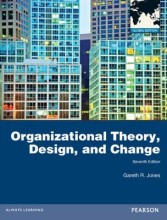Modern firm based trade theories
5 important questions on Modern firm based trade theories
What theory includes the three stages?:
Stage 1: New product
Stage 2: Maturing product
Stage 3: Standardised product
What is characteristic in each stage?
Stage 1: New product
- Firm develops and introduces an innovative product
Stage 2: Maturing product
- The demand for the product expands dramatically as consumers recognise its value.
- The market for the product stabilises
- Firms pressured to lower their manufacturing costs
What is the theory from Steffan Linder called that includes the two aspects interindustry trade and intraindustry trade?
What does the two trades mean? How does differentiated goods play a role here?
Interindustry:
- Trade between two unrelated industries in two different countries
- Ex. Cars and wine
Intraindustry:
- Trade between the same industry in two countries
- Ex. Cars
Intraindustry of differentiated goods happen because of similarities of income per capita (People have a preference of what products they want, ex. Japanese want quality cars from Germany)
What is the theory called that was developed by Elhanen Helpman, Paul Krugman, and Kelvin Lancaster that extended Linder's theory?
What did they incorporate in their theory?
They incorporated the impact of economies of scale of differentiated goods.
- If two companies in the same industry can expand their sales beyond their home market they will both benefit from economies of scale due to lower average costs and at the same time improve their competitiveness
- Higher grades + faster learning
- Never study anything twice
- 100% sure, 100% understanding
Firms have numerous ways of obtaining sustainable competitive advantage according to the new trade theory but the most popular ones are;
- Owning intellectual property rights
- Investing in research and development (R&D)
- Achieving economies of scope
- Exploiting the experience curve
Describe the four options.
- Owning intellectual property rights
- Owning a trademark, brand name, patent or copyright to create a competitive advantage.
- Investing in research and development (R&D)
- High-technology products
- First-mover advantage to firms that take the chance and act first
- Achieving economies of scope
- When the average costs decrease as the number of different products sold increases.
- Exploiting the experience curve
- Production costs decline as the firm gains experience in manufacturing the product
What is the differences between country-based theories and firm-based theories? What theories does each of them include?
- Pre-WWII
- Interindustry
Firm-based:
- Post-WWII
- Intraindustry
The question on the page originate from the summary of the following study material:
- A unique study and practice tool
- Never study anything twice again
- Get the grades you hope for
- 100% sure, 100% understanding






























